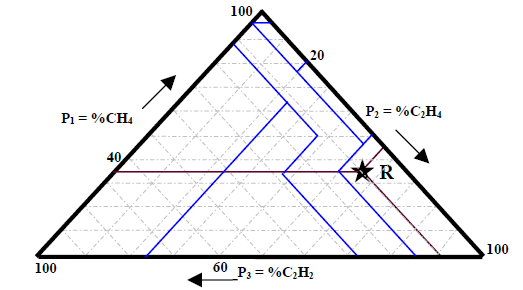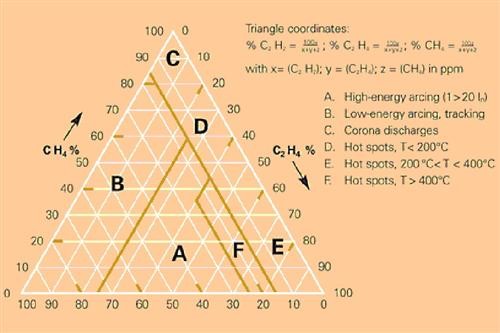


The three sides of the Triangle are expressed in triangular coordinates (P1, P2, P3) representing the relative proportions of CH4, C2H4 and C2H2, from 0 to 100 for each gas. The diagnosis should be based on recently-formed gas if possible, and including pre-fault gas in the diagnostic calculations can lead to misleading results. If reasonably stable concentrations of the gases were present before the onset of the suspected fault, it is advisable to subtract out the background concentrations, provided that the differences are large enough for interpretation. The triangle should only be used to diagnose what the fault is, not if the transformer has a fault or not.īecause of the relative inaccuracy of gas-in-oil concentration measurements at low concentrations, DGA diagnostic methods, including the Duval Triangle, should not be applied unless the gas concentrations are well above the detection limit. Applicabilityĭo not use the Duval triangle to determine if a transformer has a fault, the triangle will always indicate a fault because there is no area allocated to ‘No fault’. The fault zone in which the point is located designates the likely fault type which produced that combination of gas concentrations.

Concentrations (ppm) of methane (CH4), ethylene (C2H4), and acetylene (C2H2) are expressed as percentages of the total (CH4 + C2H4 + C2H2) and plotted as a point (%CH4, %C2H4, %C2H2) in a triangular coordinate system on a triangular chart which has been subdivided into fault zones.


 0 kommentar(er)
0 kommentar(er)
